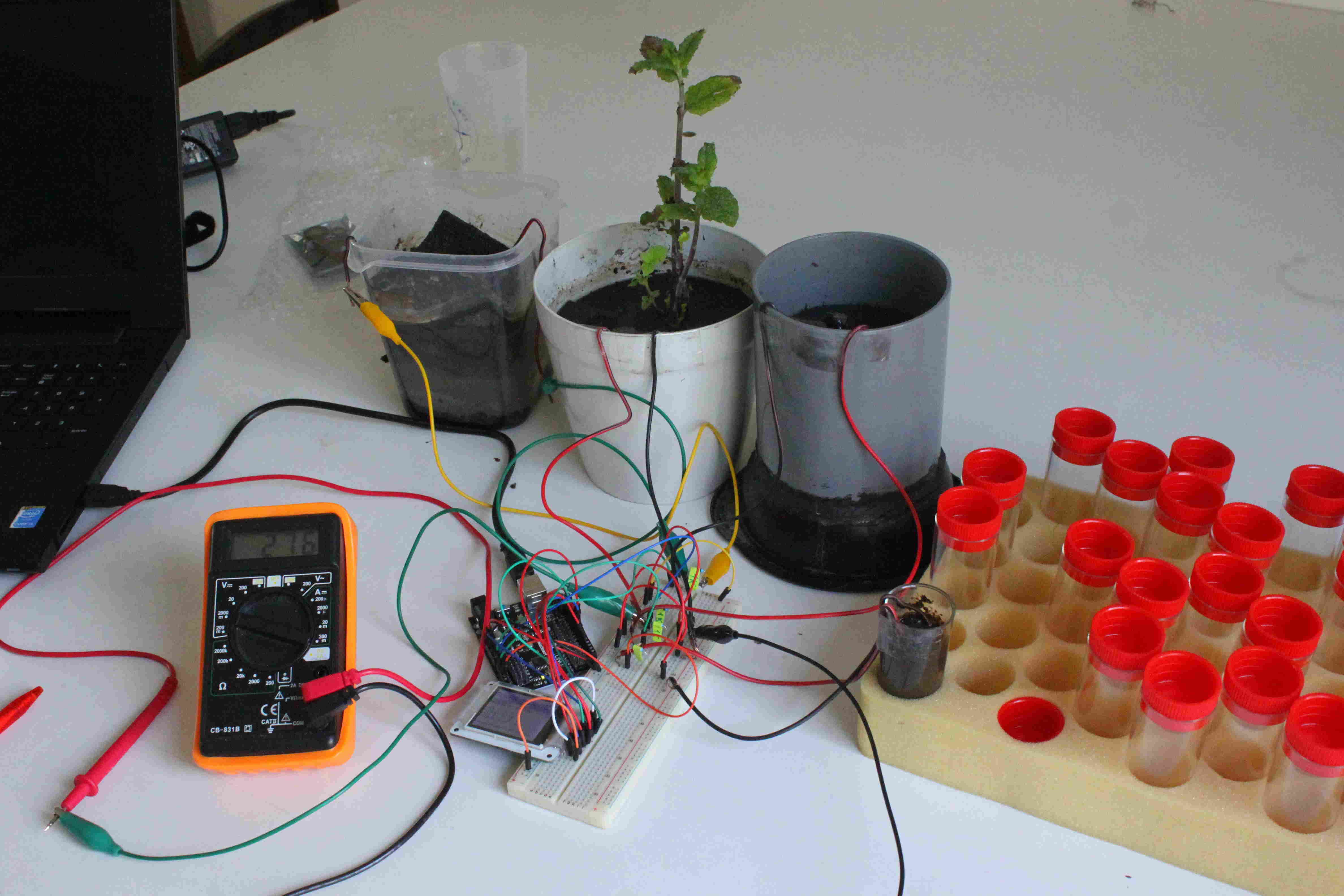To have regular data, without having to measure manually, we thought about using an Arduino chip. We made a little circuit with an arduino uno chip, and a TFT screen that were available in the lab. Each MFC is measured by an analog input of the chip, the results are then shown on the screen and stored in a SD card associated to the screen.
Analog input on arduino uno is using 1024 bit for CAN conversion. Therefore, the precision on the measure will be: Vcc/1024. To be as precise as possible, we use a 3.3V power supply, and therefore the precision on the measure is 3.22 mv. This is pretty imprecise, if we have to measure values of 10 – 20 mv, then the imprecision represent 15-30 % of the measure.
Furthermore, for some unknown reason, the value measured with the arduino chip is always 7mV lower than the value measured with the voltmeter.
Additionally, we don’t know how the chip interacts with the MFC, and if leakage currents are injected in the circuits.
And finally, we didn’t manage to display the time on the arduino chip. So, until now, the chip is not fully operational, because it registers only raw data, without the time and date associated. For the future, we have several option:
- Get some help from experienced programmers and integrate the time libraries
- Get an arduino clock module
- Or find a multi-meter that can be connected through an USB port.


Discussions
Become a Hackaday.io Member
Create an account to leave a comment. Already have an account? Log In.